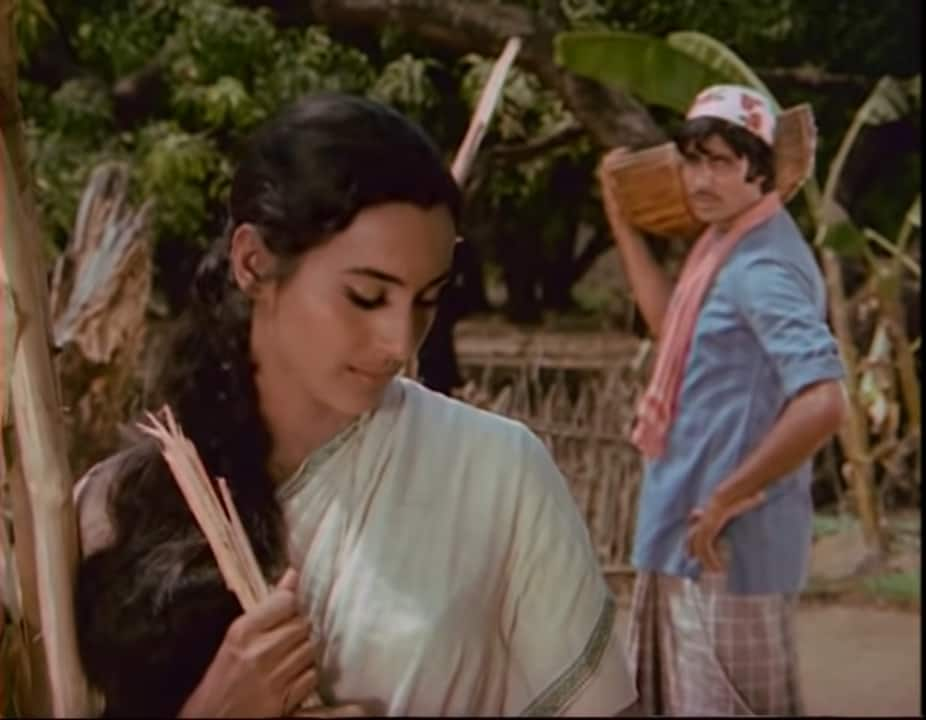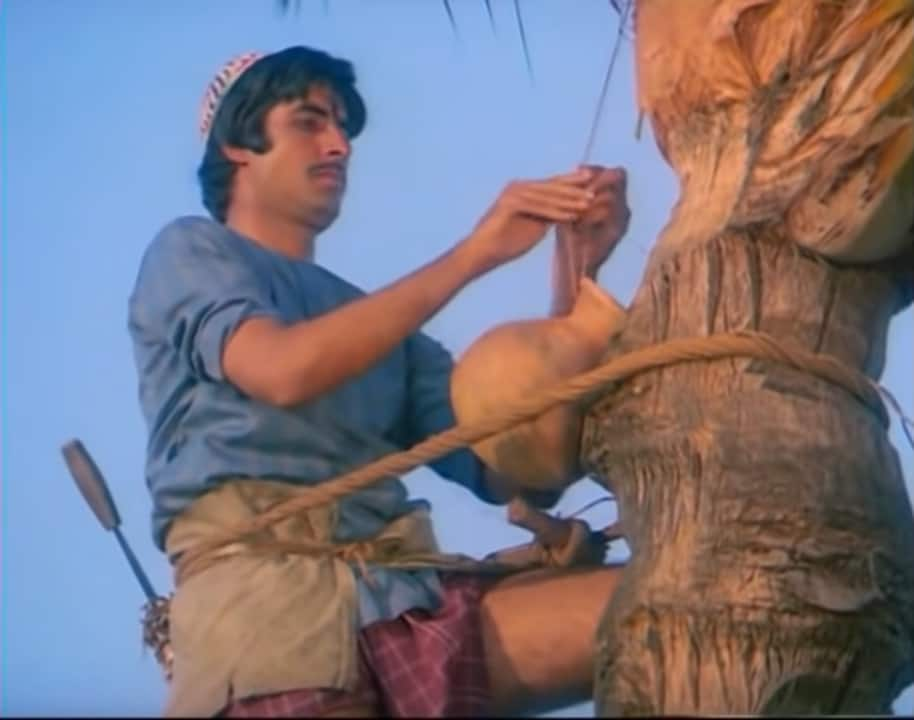



“I am a Khan. The name itself conjures multiple images in my mind too: a strapping man riding a horse, his reckless hair flowing from beneath a turban tied firm around his head. His ruggedly handsome face marked by weathered lines and a distinctly large nose.
A stereotyped extremist; no dance, no drink, no cigarette tipping off his lips, no monogamy, no blasphemy; a fair, silent face beguiling a violent fury smouldering within. A streak that could even make him blow himself up in his God’s name.”
In this succinct and genuinely moving essay written for Outlook magazine, Shah Rukh Khan spoke of what it meant for even a superstar to be Muslim in the post-2011 world. He spoke mostly of his own experiences—detained in airports, as a father who bequeaths the family name Khan to his westernised kids, as a citizen from a minority community in a free, democratic country his father fought for, as a beloved superstar. But the quoted paragraph is especially interesting—it describes the image of a Muslim in his mind. Note the descriptors: strapping, horse-rider, turban, ruggedly handsome, large nose, fair silent face. In other words, the popular image of the Pathan, the ethnic tribe native to Pakistan and Afghanistan on the north-west frontier of India.
When the Pathan gets into the groove
The party sizzles to life
When he gives his word to his love
He honours it to death and beyond
Thus goes the refrain of a song in Khan’s latest film Pathaan. He doesn’t know if he is Muslim, he says when Dr Rubai asks him, but he’s a Pathan. He is an orphan, abandoned in a cinema theatre, brought up in an orphanage. He got the epithet Pathan from an Afghan village, whose community nursed him to health when he was grievously injured in a mission that saved the village and its madrassa from a blast.
Also read: Shah Rukh Khan's 'Pathaan' sets Bollywood record with Rs 100 crore at box office on Day 1
Khan has grown his tresses for the film, wearing it like a lion’s mane, and built up his physique. It would seem that barring the horse, turban and extremism, Khan has tapped into the image of the fair handsome rugged man he conjured in his essay. Here, he may not be Muslim, but the Pathan is typically of Islamic faith. Indeed, the film plays on this assumption.
Thirty years ago, there was Khuda Gawah (1992), where Amitabh Bachchan wears a turban, a dagger around his waist, rides a horse and puts his word above all—Pathan-like in every way. Twenty years earlier in Zanjeer (1973), Bachchan’s breakout film as hero, Pran essayed the role of Sher Khan, a mehndi-haired and moustachioed small-time don who locks horns with Bachchan’s hero, comes away impressed and becomes his loyalist. “Friendship is the code I live by, my friends are more than life, The love I hold for my fellow humans, That is the only creed I follow.”
Pran’s Sher Khan is the second-most memorable portrayal of a Muslim in Hindi film arguably. Balraj Sahni’s Kabuliwala (1961)—he is broad-shouldered, hard-working, generous, full of laughter, his heart filled with love for his daughter and his land—is the most memorable Pathan. Of course, the nomenclature here lays out that he is from Kabul, but Bollywood has long conflated the Muslim with the Pathan-like tall, fair, ruggedly handsome Muslim from Pakistan, Afghanistan and the lands to our north west. In Khan’s own Raees (2017), he plays a Muslim character in Gujarat who daydreams about serenading his beloved kitted out in a Pathan suit in a desert with camels in the background. The landscape suggests Arab, but the characterisation of Raees is distinctly Pathan-like: he is hard-working, hot-headed, but honourable and patriotic.
These are to name a few, there are many more. The portrayal of the Muslim in Bollywood is almost always fair-skinned, rugged, horse-riding, shalwar-kameez clad—Pathan-like. We see this in the depiction of the Kashmiri Muslim too—think of Hrithik Roshan in Mission Kashmir and Aamir Khan in Fanaa—and the aristocratic north-Indian Muslim of the Muslim socials (Mughal-e-Azam, Chaudvin ka Chand, Pakeezah).
Also read: SRK's Pathaan to revive business of single-screen theatres, say exhibitors
There is another sub-genre featuring the Muslim citizen: stories of lower middle-class Muslim families such as Gully Boy, Darlings, Secret Superstar, Raees recently, Salim Langde Pe Mat Ro, Naseem and Mammo in the 1980s and 1990s. Call them the Bombay Muslim. They are not as fair-skinned but culturally Hindi-speaking. In the narrative of the Hindi film, they are arguably from the same Pathan-Arab stock. Benegal’s Mammo makes a direct link to Pakistan. The imagery in the Zaalima song in Raees fuses the Pathan and Arab identities.
 Image: Twitter/ @ranveersinghWhere is the Bengali Muslim?
Image: Twitter/ @ranveersinghWhere is the Bengali Muslim?I believe it was the journalist Seema Chishti who observed that we never see the Bengali Muslim or the south Indian Muslim—lungi-clad, darker-skinned, shorter—in central roles in Bollywood.
India has the second-largest population of Muslims in the world after Indonesia, a community that is as diverse as India itself. It is as if the only Muslim is the Muslim who comes from beyond the north west borders of India. There are the actors Mehmood—typecast as the Madrasi/south Indian comic—and Mohammad Umar Mukri, also typecast as a diminutive, perennially cross man (the four-feet-four-inch Taiyyab Ali of the ‘Taiyyab Ali Pyaar ka Dushman’ song in Amar Akbar Anthony). Mehmood and Mukri both played characters of all faiths in gloriously long careers, but they frequently played comic Muslim men, carrying the message that the Muslim who was not tall fair and ruggedly handsome was a caricature, not the real thing.
Also watch: Shah Rukh Khan fans dance away inside theatres during 'Pathaan' screening
Could this narrative in Bollywood have shaped Shah Rukh Khan’s imagination of the Muslim? Indeed, Bollywood’s un-seeing of the Muslim who is not tall, fair and shalwar-clad extends even to the Partition, the seismic moment that reshaped south Asia in 1947. The stories of the Partition that we see in Hindi film are overwhelmingly stories of Punjab—Garm Hawa (1974), Ek Chadar Maili Si (1986), Gadar (2001), Pinjar (2003), Veer Zaara (2005), Bhaag Milkha Bhaag (2013), Manto (2018). Can you think of one story about the Partition outside of Punjab in Hindi film? When a story of Partition travels from the Kolkata industry to Mumbai like Srijit Mukherji’s Rajkahini (2015), set on the India-Bangladesh border, it is shifted to the India-Pakistan border in the Hindi version called Begum Jaan (2017). As if the people of Bengal and Assam and the states of the Northeast were not cleaved into two in 1947, as if Punjab alone bled.
I thought of this systematic un-seeing when I re-watched the 1973 Rajshri Productions’ Hindi film Saudagar, which returned to our screens through Mubi in 2021, and is now playing on Amazon Prime Video.
 Saudagar is now on Amazon Prime Video
Saudagar is now on Amazon Prime VideoBased on a short story by Narendranath Mitra, the film is set in a Muslim community in rural Bengal, filled with rivers, ponds, palm trees and boat rides. Amitabh Bachchan plays the lungi- and skullcap-clad ‘saudagar’ (deal-maker) of the title, the most gifted tapper of palm sap in his village. Moti (short for Motelaf) works with the widow Majubi, played by Nutan, who cooks jaggery from it and sells it in the local market. His gurh is the finest and most expensive in the market, yet he is far from rich because most of his profit goes towards paying Nutan. He is besotted with Phool Banu (played by Padma Khanna), whose father has set a meher (bride price) of Rs 500 that Moti is unable to procure. To solve the problem, Bachchan marries Nutan, saves on paying for her labour and puts down the bride price for Phool. She is younger, fanciful, less skilled at cooking jaggery but not a bad person; it is Bachchan who plays the most calculating character. His jaggery no longer sells well and at film’s close, he returns to Nutan, but this time as a business partner.
Also read: SRK's Pathaan becomes biggest release, screen count reaches 8,000 worldwide
The Muslim identity is marked by the lungi and skullcap, by the practice of meher, the acceptance of widow remarriage and divorce. But the film is rooted in Bengali-ness. The story is set around palm jaggery, a Bengali favourite. We see Bachchan at the local sweet shop selling rosogollas and amritis (the Bengali name for the imarti). When he tries to procure a loan to pay the meher, he lines up before the Banerjees and Mullicks of the village, the better-off upper-caste Brahmins and trader Hindus. We see the gamchha, the soft red checked traditional Bengali towel, several times. We see the boat men and their songs, the beloved genre known as Bhatiyali in Bengali music that has shaped a good number of Hindi film songs. We see Nutan’s Majubi plant a tulsi sapling in the courtyard of her home with Bachchan. I don’t know if Bengali Muslims follow the tulsi tradition, but I liked the film’s suggestion that in some ways it is hard to tell Muslim traditions apart from Hindu ones in Bengal.
The film is also a lovingly-detailed chronicle of rural Bengali livelihoods and lifestyles, many of which may not exist today. We see how high up the trees Bachchan climbs, hoisting his lungis up to the size of boxer shorts, cutting gashes on the trunks of palm trees for the sap to leak through, tying up pots to collect the sweet white sap, manoevring himself with a rope belt up and down the trees. We watch Nutan and Khanna boil the juice in wide clay vessels, stirring it with palm fronds, we hear of the time and patience it takes to distil it into tablets of fragrant jaggery. We hear Nutan speak of sweet soda and the tricks to cook it well.

We see the skill and back-breaking labour of agricultural producers.
It is this detailing, in fact, that makes the emotive beats of the story resonate. Bachchan cheats Nutan but we understand what tempts him. We see how hard he toils and how little he makes. We see, too, that Khanna tries but fails to cook like Nutan. We see how little they live with, and how hard they labour. More than anything else, isn’t this also the authentic claim to equal citizenship, that those who work as hard as these men and women are equal Indian citizens?
In this season of Pathaan, I find my thoughts returning to Saudagar. We are living in a moment when claims to citizenship are vehemently contested, not only on grounds of religion but also on ideology and free expression. One response from Bollywood is to make bombastic claims of patriotism from the minority citizen, as Pathan seems to do. Half a century ago, when the memory of Partition was far more recent, the same industry was able to do this with far more rootedness and conviction, quietly and movingly.
Discover the latest Business News, Sensex, and Nifty updates. Obtain Personal Finance insights, tax queries, and expert opinions on Moneycontrol or download the Moneycontrol App to stay updated!
Find the best of Al News in one place, specially curated for you every weekend.
Stay on top of the latest tech trends and biggest startup news.